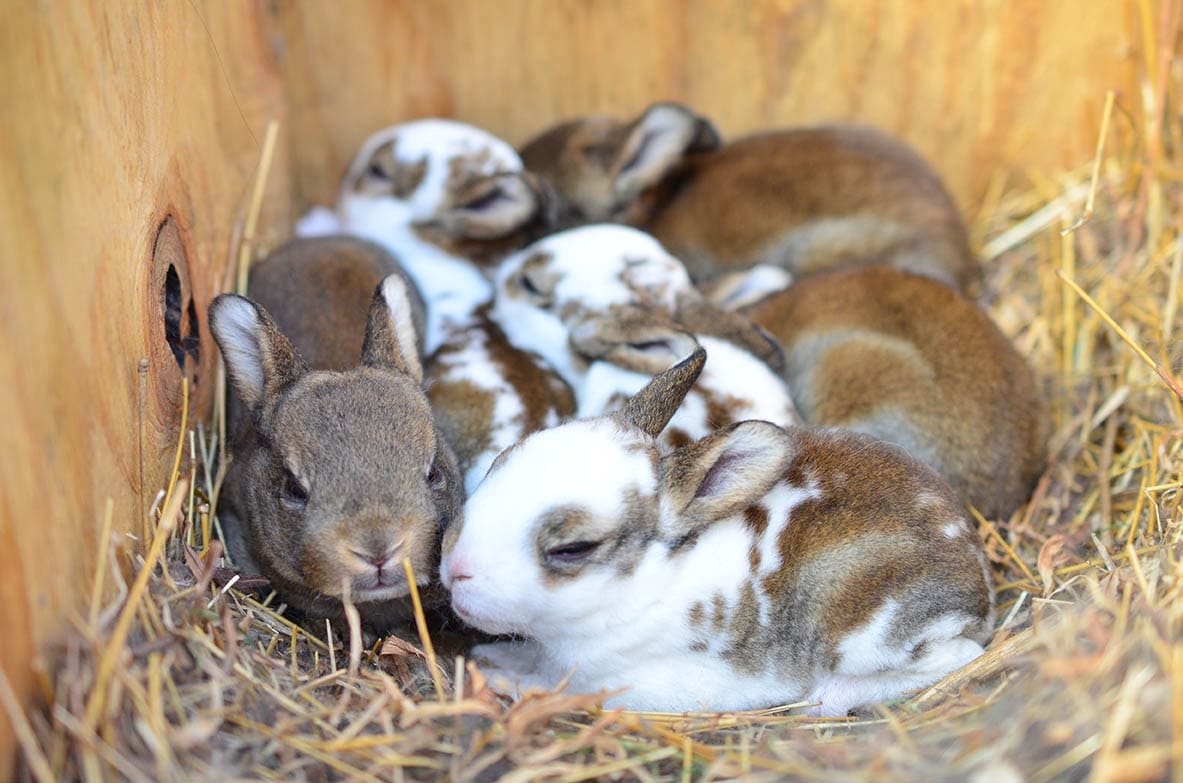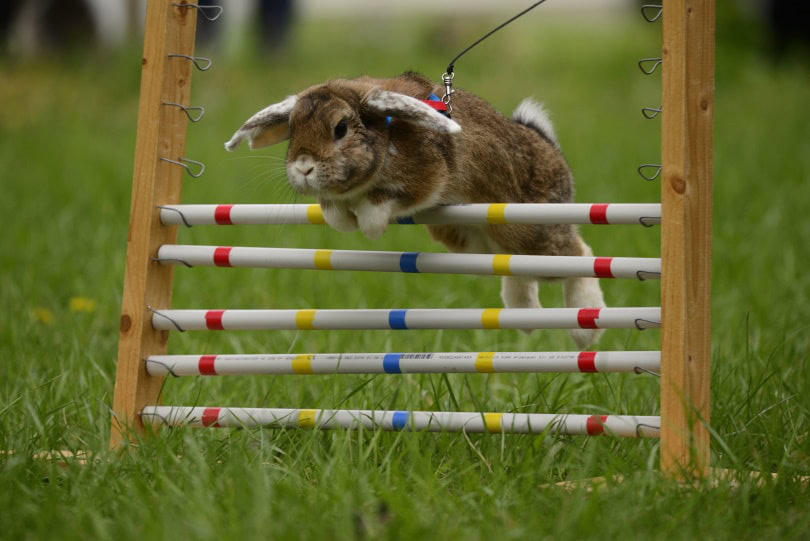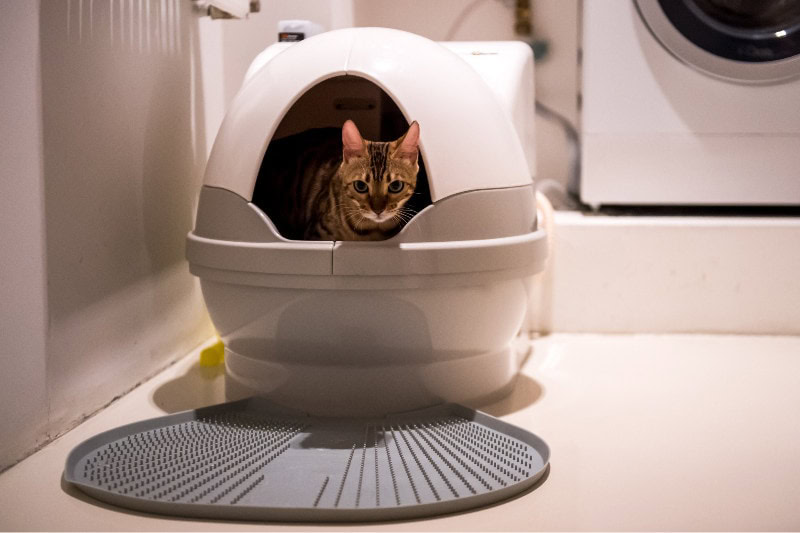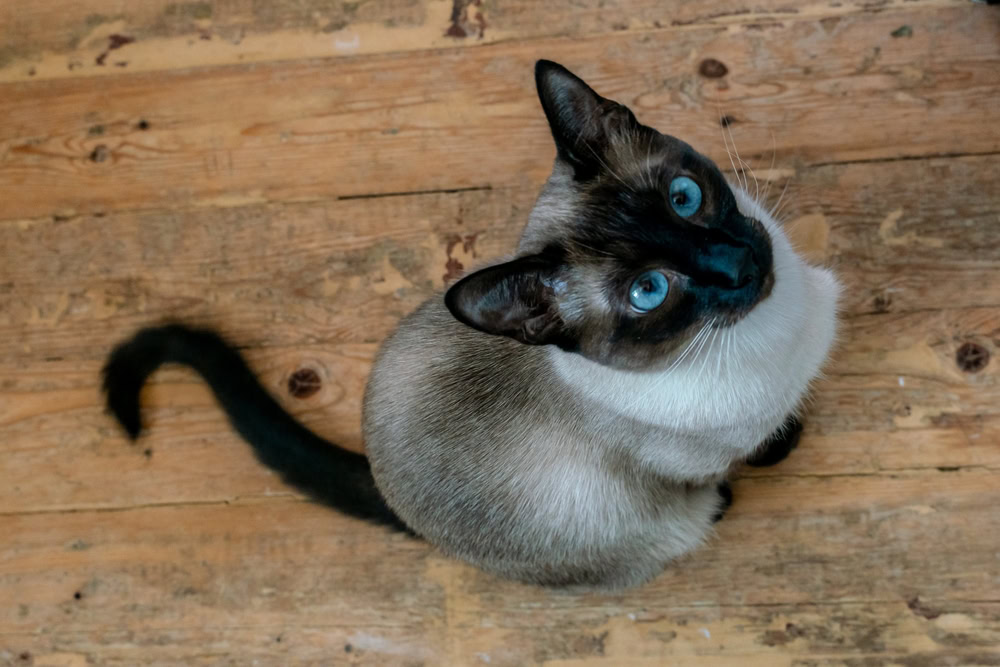VET APPROVED

The information is current and up-to-date in accordance with the latest veterinarian research.
Learn more »Click to Skip Ahead
Rabbits are reputable rapid producers, and the phrase “breeding like rabbits” does not tell the whole story. Female bunnies can conceive at around 3 months old, stay pregnant for only 30 days before they produce kits, and can fall pregnant again immediately!
A healthy female bunny can deliver a litter of up to 14 rabbits during each pregnancy, with the average being six kits. This all means that a mother rabbit, also known as a doe, can have a litter of babies every month!
However, not all these newborns survive, even though rabbits tend to be self-sufficient mothers. For this reason, human caregivers may have to step in to ensure that the doe and litter thrive. Here’s everything that you should know about rabbit breeding.

Rabbit Reproduction
Rabbits sexually mature between the ages of 3 and 6 months, depending on their breed and size. An unspayed female bunny can start as early as 105 days old. A buck’s (or male rabbit’s) testicles typically drop at 10 to 14 weeks of age, enabling him to impregnate a doe at such a young age.
Female bunnies are prolific producers and can give birth to a litter monthly because of their short gestation period of only 28 to 32 days. A doe can become pregnant again within just 24 hours after giving birth. This is why it is vital to separate your doe from the buck before the former gives birth, to prevent another pregnancy.
How Many Kits Survive Out of a Litter?
Most does kindle (give birth) late at night or in the early morning hours. Some baby rabbits will be stillborn, so be swift to remove and dispose of the dead kits and the placentas. However, do it gently to avoid stressing the doe and causing potential issues with the other kits.
Don’t be surprised to see the mother eat the dead kits and the placentas. It’s not due to cannibalism but is rather a safety-first approach. She may eat them to prevent predators from tracking their scent. Lack of a body means no scent, so there’s no predation! Besides stillborn births, some kits can be born weaker than the others and may not survive.
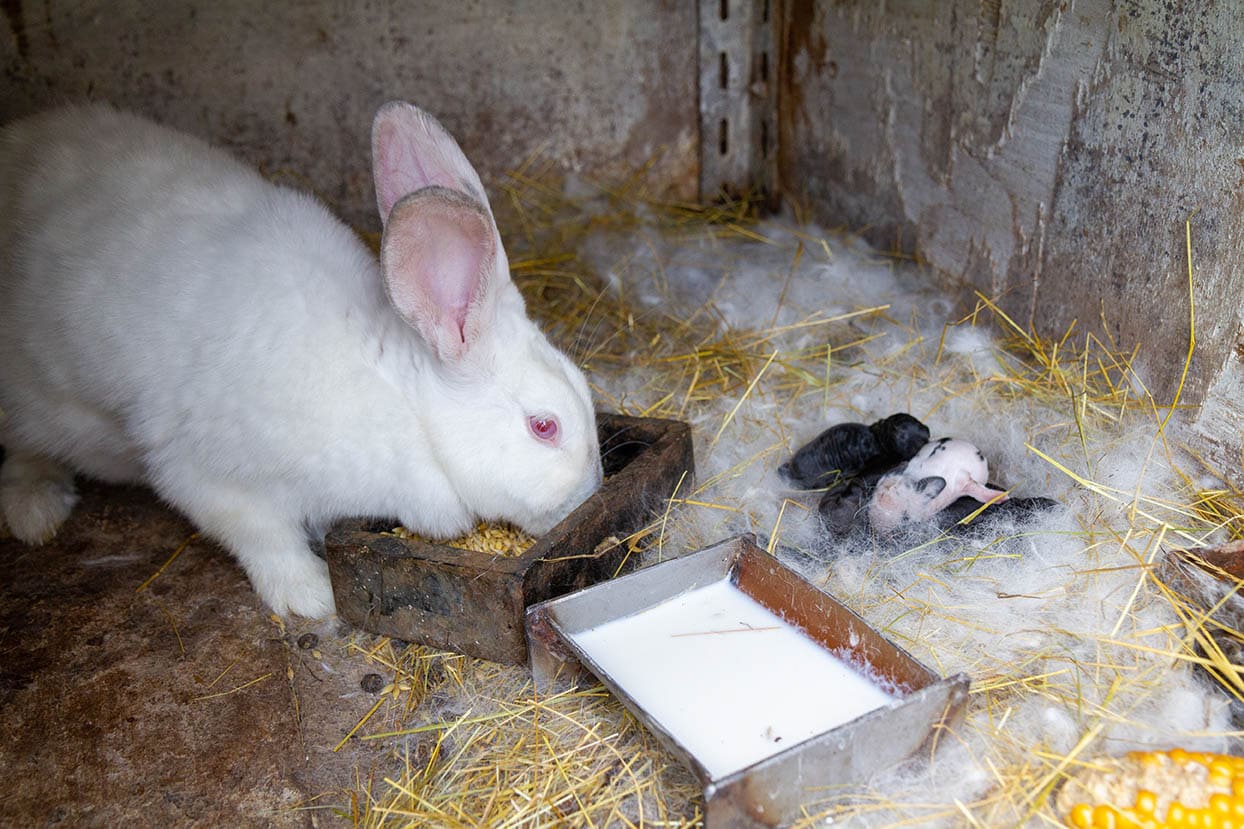
Female rabbits are not instinctively maternal and may ignore vulnerable, weak rabbits. They often prioritize those that are more likely to survive and focus on feeding and nurturing these stronger babies.
Rabbits have innate drives to preserve their species, and stronger kits have higher survival chances to breed themselves eventually. For this reason, does may separate their kits into the two groups, then neglect the weak ones and concentrate on the stronger offspring. It would be best for you to identify the weak ones; they’re typically hidden at the farthest end of the nest, where they can’t access milk and warmth.
Mother rabbits do not mourn the loss of their newborn kits. However, they are overprotective of their surviving offspring and may react aggressively toward human caregivers who try to handle the babies.

A Rabbit’s Nest
You should provide your pregnant doe with a nesting box by the 26th day of her pregnancy, though you still may notice the mother rabbit pulling out her fur and creating a nest for her offspring days before she births them.
It’s best to offer the rabbit and kits with a nesting box to prevent the babies from scattering. These boxes come in various sizes, so it’s essential to get the right size for the particular mother breed and her babies. The rule of thumb is to find a box that’s large enough for the female bunny to turn her body around in comfortably.
A larger den is also cozier for the newborns to stay warm and dry. Don’t make the box too large, though, as the doe may start using it as a toilet, which isn’t healthy for the litter.
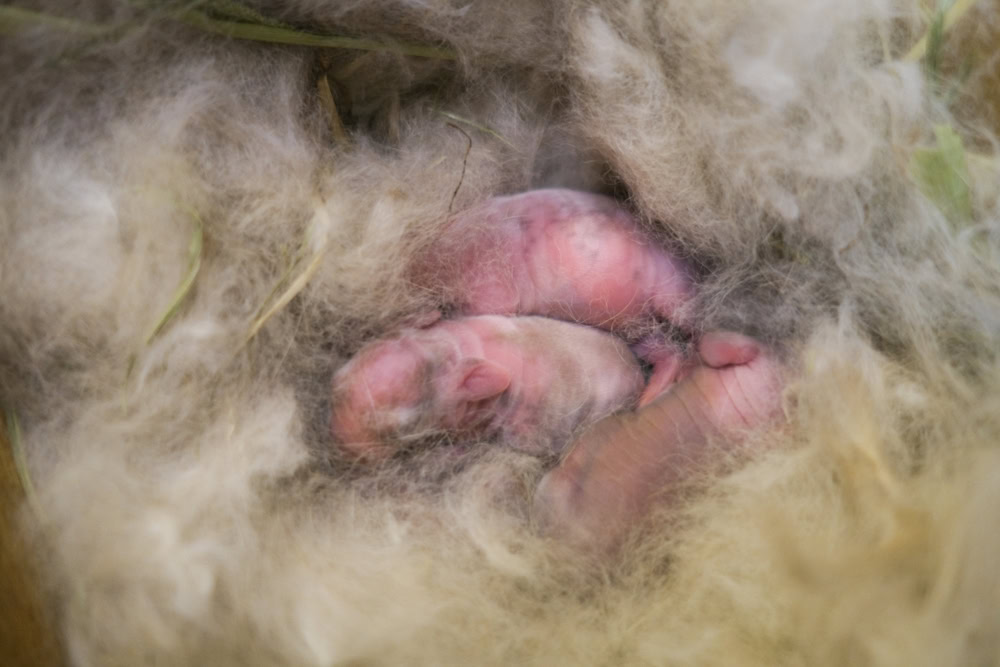
- A wooden or cardboard box that’s not much bigger than the mother can work.
- Remember to carve out a door to enable the doe to hop in and out of the nest comfortably.
- Fill one of the nest’s corners with wood shavings and plenty of fresh hay where the mother and her babies can rest.
- It’s vital to provide ample access to fresh hay and water to the female rabbit during the mothering days, along with her usual pellet feed.
- Keep the environment free from loud, startling noises that can spook the doe and cause her to stomp on her litter.
- Make sure you place the nesting box in a draft-free area.

The 5 Factors That Affect the Size of a Rabbit Litter
1. Female Rabbit’s Age
A young doe that has just reached sexual maturity tends to birth a smaller litter size than older rabbits. The litter size increases as she ages during subsequent births. However, an aging rabbit may also start birthing a smaller litter size, which continues getting smaller until she reaches the end of her birthing years.
2. Female Rabbit’s Size
Rabbit breeds vary in terms of body size. Large rabbit breeds produce larger litter sizes than dwarf bunny breeds.
Large rabbits tend to have litters of up to 14 kits, while dwarf breeds kindle an average of just two kits. Conversely, medium-sized bunnies birth up to six babies on average.
- Checkered Giants
- New Zealand Whites
- Flemish Giant Rabbits
3. Kindling Order
The number of kits you get per litter also depends on the litter number. The litter size of a first-time mother rabbit tends to be smaller and grows from the second birth onward.
The higher the birth number, the more mature a doe is, and the more kits she will likely produce. However, the litter size starts decreasing as the doe ages and continues to get smaller until she reaches the end of her kit-bearing years.
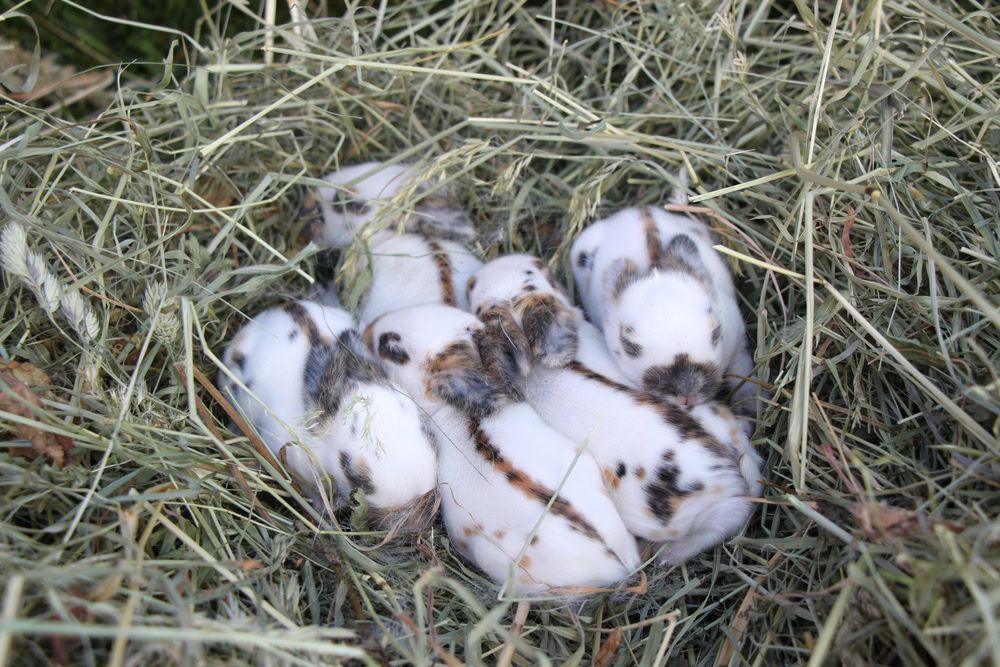
4. Female Rabbit’s Health
A healthy doe has fewer risks of potential problems during pregnancy and birth, enhancing the litter’s overall health. In addition, a healthy doe is less likely to kindle stillborn, weak, or underweight kits that can die during or right after birth.
5. Rabbit Environment
The litter size boils down to the parent rabbits’ mating process. The mating environment, such as the enclosure (the doe is taken to the buck’s cage), affects the number of times the pair mates.
The more they do, the more eggs the doe releases, and the larger the litter size. Also, where the doe lives when pregnant, potential predators, and her stress levels, nutrition, hygiene, and play a huge difference in the kit fetuses’ development, reflecting litter size.

Summary
A rabbit’s litter size varies from bunny to bunny and from pregnancy to pregnancy. It is influenced by the experience of the doe as well as the overall kit health after birth. Generally, it may take weeks before you get an accurate litter count because some may die in the process.
Does are generally great at caring for those kits with a higher chance of survival, and it’s best not to handle the kits for at least 3 weeks, and if you must, do it gently. While there are some small number variations by breed and size, in general, rabbits are prolific, and if you wish to prevent them from reproducing at a very fast rate, spaying and castrating them is a must.
- See also: How Long Are Rabbits Pregnant?
Featured Image Credit: Kassia Marie Ott, Shutterstock
